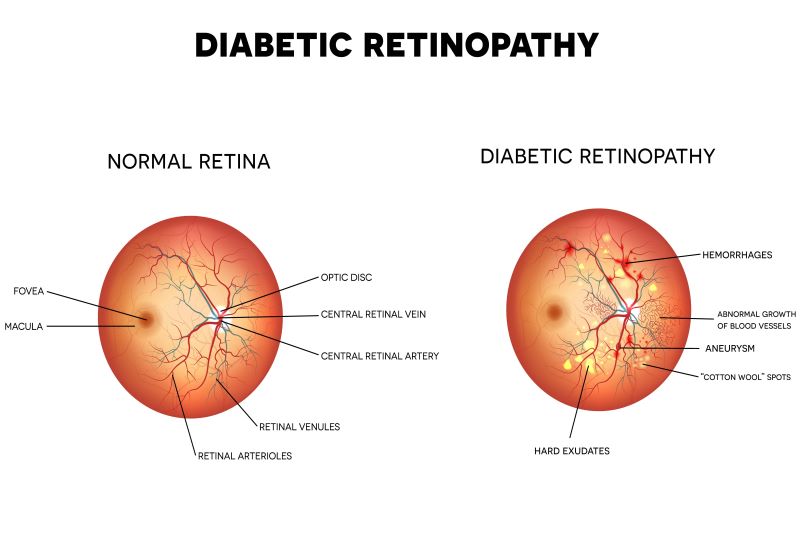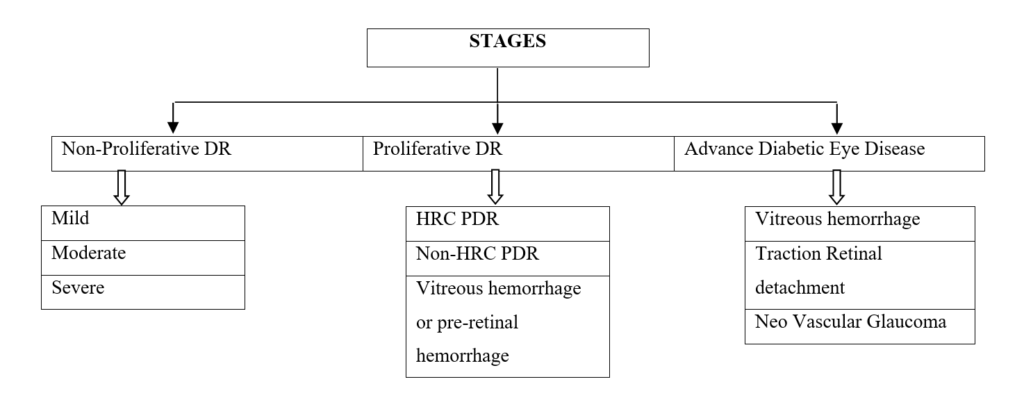Diabetes Eye Disease
Diabetes is increasing worldwide, of 415 million people living with diabetes in 2015, over 1/3rd will develop some form of Diabetic Retinopathy. More than one in three living with diabetes will develop Diabetic Retinopathy.
Diabetic retinopathy is a manifestation of diabetic damage which affects the eyes. It is caused due to vessel damage in retina (which is the most important light sensitive tissue found in the eye). Over time the vessel damage makes the walls of vessel weak which in turn starts bulging (micro aneurysm) and slowly starts leaking fluid and is also accompanied with blood within the retinal layers. These changes can be mild moderate or severe and the fluid leakage can involve the central area of vision (macula) leading to its swelling and drop in vision. As the vessel damage progresses the vessels start getting blocked leading to poor blood supply to retina. Lack of blood supply leads to formation of abnormal blood vessels. These blood vessels are fragile and can leak into the clear jelly (Vitreous) inside the eye leading to sudden loss of vision. Due to scarring and shrinkage around new blood vessels the retina gets pulled away leading to detachment and loss of vision (Proliferative diabetic retinopathy). In few cases the blood vessels grow in the angles, blocking the normal fluid drainage of eye leading to high pressure & damage to the optic nerve and blindness.
The changes caused by diabetes can manifest as:
- Microaneurysms
- Retinal Hemorrhage
- Hard exudates – lipid deposit
- Cotton wool spots – swollen, ischemic axons of nerve fibre layer
- Venous dilatation & beading
- Intra retinal micro vascular abnormalities
- Abnormal new vessels which can be “Neovascularisation over disc” OR “Neovascularisation Elsewhere”
Effects of Diabetes on Eyes
A) Diabetic Retinopathy:


B) Diabetic Macular Edema (Can accompany any level of DR)
C) Refractive Changes: Variations in blood glucose can cause changes in refractions power.
D) Diplopia: Simultaneous perception of 2 images of single object due to damage to nerves that control eye movement.
E) Cataract: Both development & progression of Cataract is hastened due to diabetes.
F) Glaucoma: Advanced diabetic eye disease can cause neovascular glaucoma.
Treatments
(1) Mild NPDR, moderate, severe with no swelling – Regular follow-up.
(2) Mild, moderate and severe NPDR with swelling of macula treatment is given in form of injections to the eye to reduce the swelling.
Proliferative diabetic retinopathy:
- Laser to the retina.
- Advance Diabetic eye disease which comprises of bleeding in eye (Vitreous hemorrhage) and Retinal detachment – they are treated surgically.
Related Topics:






